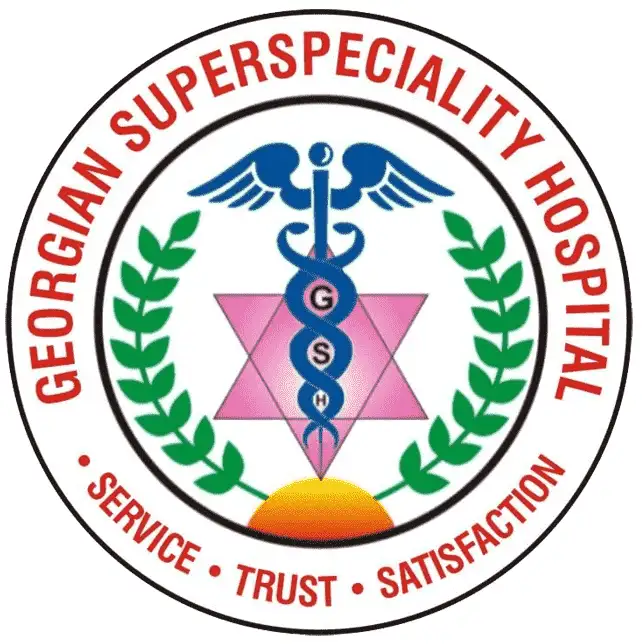Pediatric Onco Surgery

Pediatric Onco Surgery
Pediatrician Onco, also known as spinal cord tumors in children, is a condition where abnormal growths or masses develop within or near the spinal cord. These tumors can be benign or malignant, and if left untreated, can cause severe neurological damage or paralysis. Treatment options for pediatrician onco vary depending on the size, location, and type of tumor, with surgical intervention being the most common approach. In this article, we will explore the diagnosis, surgical interventions, postoperative care, complications, and long-term outcomes associated with pediatric onco surgery. We will also discuss new advancements in the treatment of pediatrician oncho and ways to prevent the recurrence of these tumors in children.
Overview of Pediatric Onco Surgery
Pediatrician Oncho surgery refers to the medical procedures done to treat children with Onchocerciasis, commonly known as river blindness. Onchocerciasis is a disease caused by the parasitic worm Oncocare volvulus, which is transmitted by the bites of infected black flies. If left untreated, it can lead to skin and eye problems, including blindness.
Understanding Onco in Children
Onco is a parasitic disease that mainly affects people living in rural areas of Africa, Latin America, and Yemen. Children who live in endemic areas are susceptible to Onco infection, with the peak disease transmission occurring during the rainy seasons. The symptoms of Onco in children include skin rashes, itching, and nodules beneath the skin, while the more severe cases can result in blindness.
The Importance of Early Detection and Treatment
Early detection of Onco in children is critical to prevent the progression of the disease and minimize long-term complications such as blindness. The World Health Organization recommends yearly treatment with Ivermectin, a medication that kills the parasite and prevents further transmission. Surgical interventions are also a vital part of the treatment plan, with the most common procedure being the removal of Oncho nodules. Facebook
Diagnosis and Evaluation of Onco in Children
Medical History and Physical Examination
Diagnosing Onco in children requires a thorough medical history and physical examination. The health care provider will ask about the child’s exposure to black flies, travel history, and any symptoms such as itching, skin rashes, or nodules.
Diagnostic Imaging and Laboratory Tests
Diagnostic imaging and laboratory tests can also be helpful in diagnosing Onco in children. Skin biopsies can identify the presence of parasitic worms, while blood tests can detect antibodies to the organism. Ultrasonography and magnetic resonance imaging (MRI) can be used to identify the presence and location of Onco nodules.
Surgical Interventions for Pediatric Onco
Types of Pediatrician Onco surgery
Surgical interventions for pediatric Onco include the removal of nodules and the excision of skin lesions. These procedures can be done under general or local anesthesia, depending on the size and location of the affected area.
Anesthesia and Preparation for Surgery
Before surgery, the child will receive a thorough medical evaluation, including an assessment of their overall health and any pre-existing medical conditions. If general anesthesia is needed, the child will be carefully monitored throughout the procedure to ensure their safety.
Surgical Procedures and Techniques
The surgical procedures for pediatric Onco surgery vary depending on the size and location of the nodules and skin lesions. The surgeon will use a scalpel or laser to remove the nodules and any affected skin tissue. The wound will then be sutured or closed with medical adhesive, and a sterile dressing will be applied to prevent infection.
Postoperative Care and Recovery for Children with Onco
Pain Management and Wound Care
After surgery, the child will receive pain medication and proper wound care instructions. The wound site will need to be kept clean and dry to prevent infection. The child may also need additional treatments, such as antibiotics or antifungal medications, to prevent further complications.
Rehabilitation and Physical Therapy
Rehabilitation and physical therapy can help children recover from Onco surgery. The rehabilitation process includes exercises to restore range of motion and strength to the affected area. Physical therapy can also help with pain management and the prevention of long-term mobility issues. Follow-up appointments with the health care provider are also essential to monitor the child’s progress and ensure proper healing.
Managing Complications Arising from Pediatric Onco Surgery
Pediatrician Oncho surgery is a critical procedure that involves the removal of parasitic worms from beneath the skin of children. While the surgery can be life-changing, it is not without complications. It is essential to detect and manage these complications early to prevent further harm to the patient.
Common Complications After pediatric Onco surgery
Complications arising from Oncho surgery can include fever, bleeding, wound infections, and lymph node swelling. Patients may also experience nerve damage, skin ulcers, and allergic reactions. It is crucial to monitor patients regularly for these and other complications to prevent more severe health problems.
Preventing and Treating Complications
Preventing complications involves taking necessary precautions before, during, and after surgery. During surgery, it may be helpful to use sterile techniques to reduce the risk of infection. Additionally, providing proper wound care and monitoring the surgical site for any signs of infection can help prevent complications. In managing complications, doctors may recommend medications, further surgery, or additional treatments to prevent further harm to the patient.
Prevention and Management of Recurrent Onco in Children
Preventing recurrent Oncho in children after surgery is essential to help patients maintain their health.
Preventative Measures and Follow-up Care
Following proper aftercare instructions, such as keeping the surgical site clean, can help prevent recurrent Oncho. Additionally, patients must maintain a healthy lifestyle and follow-up with their doctor regularly. During follow-up appointments, the doctor may perform tests to ensure that the patient’s Oncho has not returned.
Treatment Options for Recurrent Onco
If Oncho recurs in a patient, the doctor may recommend additional surgery or medication to remove the remaining worms. The treatment plan will depend on the severity of the patient’s condition and their overall health.
Long-term Outcomes and Quality of Life for Pediatric Onco Patients
The long-term outcomes and quality of life for pediatric Oncho patients can vary depending on the severity of their condition and the treatment they receive.
Potential Long-term Effects of Onco Surgery
Oncho surgery can have long-term effects such as scarring, nerve damage, and reduced mobility. Patients may also experience psychological distress and emotional trauma from the surgery experience.
Improving Quality of Life for Pediatric Onco Patients
To improve the quality of life for Pediatric Oncho patients, healthcare providers may recommend counseling services and physical therapy. Additionally, providing adequate support systems and resources can help patients and their families cope with the emotional and physical effects of Oncho surgery.
Advances in the Treatment of pediatric Onco surgery
Advances in technology and research are continuously improving the treatment of Oncho in children.
Current Research and Developments in pediatric Onco surgery
Current research is exploring new techniques for Oncho surgery, such as using lasers instead of scalpel blades. Additionally, researchers are looking into new drugs that can target the parasitic worms directly.
New Technologies and Techniques for Treating Onco in Children
In addition to laser surgery, new technologies such as 3D-printed surgical tools and virtual reality simulation are being explored for Oncho surgery. These technologies can improve the accuracy and precision of surgical procedures and reduce the risk of complications. IN conclusion, pediatric oncho surgery is a complex procedure that requires a multidisciplinary approach. Early diagnosis, timely intervention, and proper postoperative care play crucial roles in ensuring the best possible outcomes for children with oncho. With continued advancements in surgical techniques and technologies, we can hope to provide better treatment options and outcomes for children with this condition in the future.
What are the potential risks and complications associated with pediatric onco surgery?
The potential risks and complications associated with pediatric oncho surgery include bleeding, infection, nerve damage, spinal cord injury, and respiratory complications. However, most of these complications can be effectively managed with proper postoperative care and follow-up. Georgian Superspeciality Hospital in Varanasi
